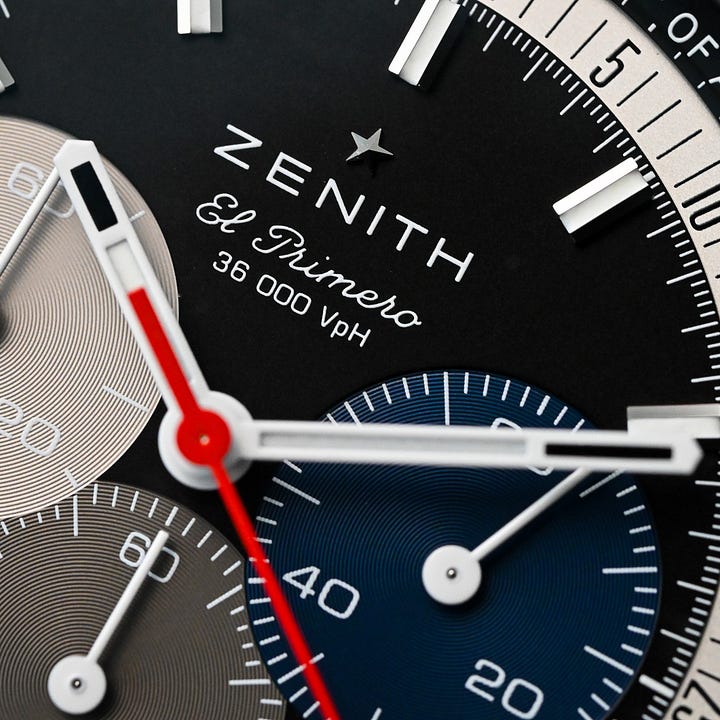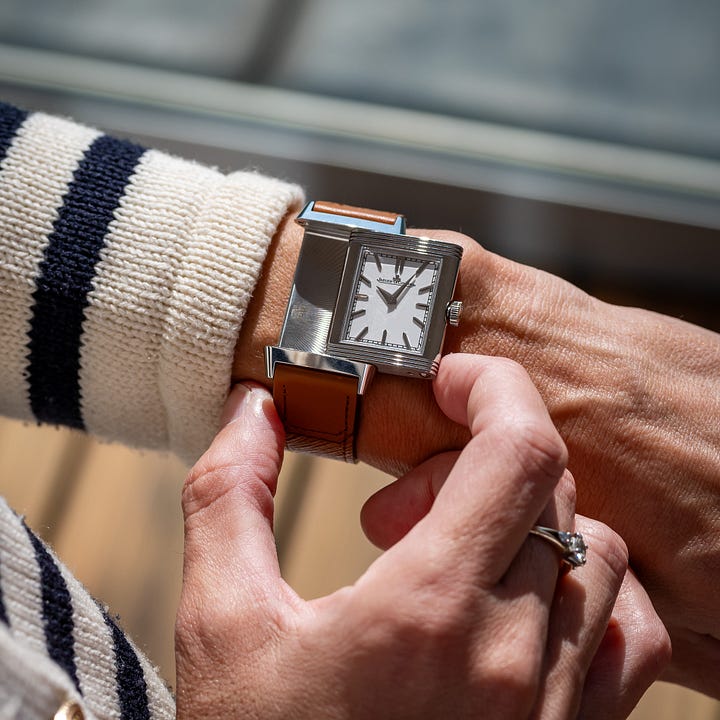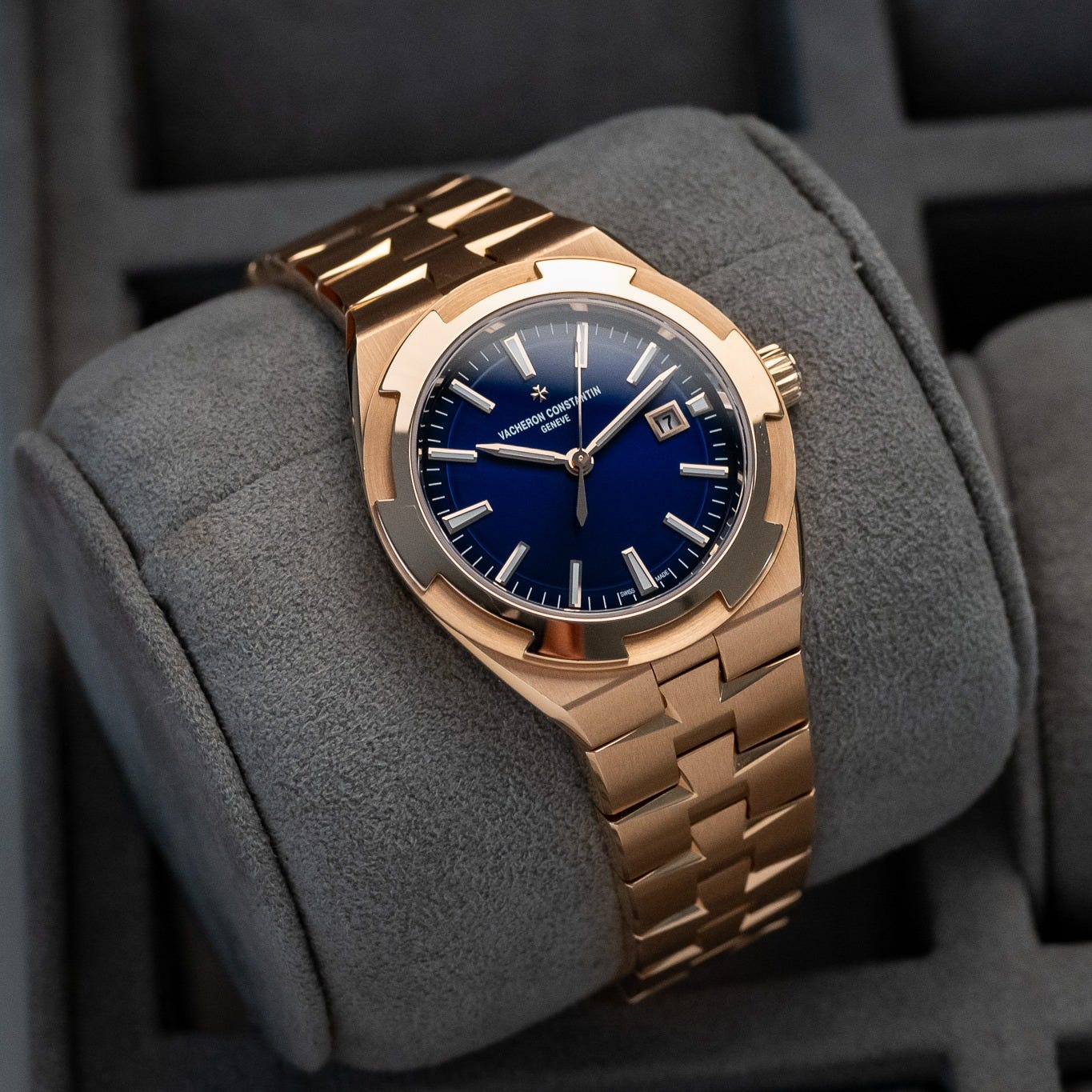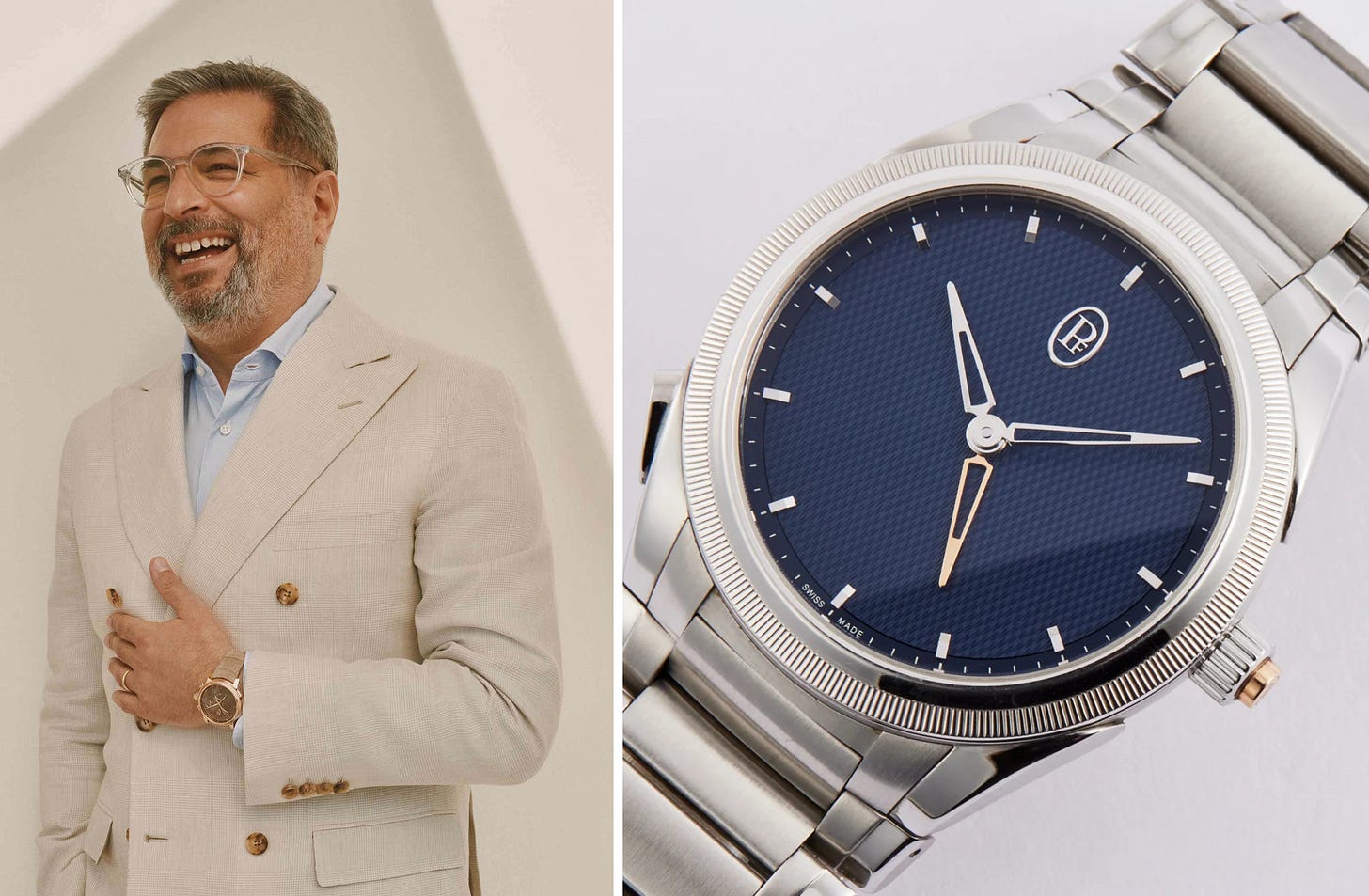Interview: Parmigiani Fleurier CEO Guido Terreni
'We’re living in a crisis in creativity in our generation.'
Good morning. On Friday, I solicited feedback via Substack chat on a preferred chat platform for subscribers. I’m still deciding on platform, but it’ll be open to paid subscribers, who will receive a separate email invite with a link to join in the next few days (if you want). It should also be a fun way to share instant reactions from Watches & Wonders come April 1. In today’s newsletter:
More CEO changes, and where is the fresh perspective?
Then, an interview with Parmigiani Fleurier CEO Guido Terreni
Two Things to Know


What Happens to a Brand When the Boss Leaves?
Here’s an incomplete list of watch brands that have announced CEO changes in the past 18 months or so: Cartier, Audemars Piguet, Vacheron Constantin, Hublot, Jaeger-LeCoultre, TAG Heuer, Van Cleef, Breguet, Montblanc, Zenith, Roger Dubuis, Greubel Forsey.
This week, Panerai joined the list as former CEO Jean-Marc Pontroué abruptly announced his departure, replaced by Emmanuel Perrin, previously head of Richemont’s watches division.
This rapid reshuffling of leadership isn’t limited to the watch industry.
“What happens to a multibillion-dollar luxury brand when the boss leaves?” the Wall Street Journal asked this week, observing a similar clip of changes in luxury fashion.
In times of transition, brands often lean on archival hits—but that doesn’t always work.
Watches are different than fashion–more durable and less on trend. For a brand like Cartier, watches are the “tried-and-true hits.”
Collectors probably don’t care much about these personnel changes, but it’s an indicator of how upheaval in the top ranks could affect the watches released for the next couple of years–leaning on history and the archives.
Where is the fresh perspective?
For the most part, these recent reshuffles haven’t brought in fresh leadership with new perspectives. Most have prioritized continuity as long-time execs are promoted to top jobs at LVMH and Richemont.
Jérôme Lambert was named CEO of Jaeger-LeCoultre, a gig he first held from 2002-2013. Emmanuel Perrin was named CEO of Panerai—he’s been the head of Richemont’s watches division since 2017 (he’s also been interim CEO of Roger Dubuis for the past year).
Many of these bosses are bosses for good reasons. The watch industry has experienced tremendous growth over the past 15 years, and some of these men have built or grown brands from relatively small operations.
Stability has its benefits, especially in a centuries-old space. So perhaps this is the way it is and always has been in the conservative, sometimes stodgy industry. But I’m not so sure.
Günter Blümlein co-founded A. Lange in Söhne in 1990 when he was 37. A generation ago, Georges Kern was named CEO of IWC at just 36 years old. Current Rolex CEO Jean-Frédéric Dufour took the helm in 2014 in his mid-40s.
In 2018, the N.Y. Times even observed that a younger generation of leaders was taking over Swiss watchmaking. Seven years later, it’s many of the same names trading places. If the watches being made feel familiar, perhaps it’s because those at the top are too.
This time around, Audemars Piguet hiring outsider Ilaria Resta is an exception.
It must also be said that age is just a number. I felt more energy in the room watching this panel with a 70-something Jean-Claude Biver than a puppy on two espressos.
“How can anybody retire from a passion, from, love?” Biver said.
Experience matters, but so does renewal. The industry must find a way to balance the two—watches also need outsiders, youth.
There’s talk the industry is going through a “slowdown.” How will an industry known for tradition also make space for this reinvention?
If it can’t, it might risk something worse: stagnation.
Releases of the Week from $500 to $500k
Louis Vuitton x Voutilainen announced the LKV02 GMR 6, its second of five collabs after 2023’s mashup with Rexhep Rexhepi. Even at a glance, you can see how its hand-painted colors fit in with the palette of Louis Vuitton’s Spring 2025 fashion collection (scroll through LV’s Instagram for what I mean). At €550k and limited to just five pieces, it’s the ultimate prize for VVVIPs. The “Louis cruises with” is a little corny, but it’s cool the world’s largest luxury brand is embracing independent watchmaking and releasing its signature collab right on the heels of fashion week.
On the other end of the spectrum, I like the Paulin Modul collab with Chicago artist Crystal Zapata. The blurred numerals and starry indices have an ethereal, out-of-this-world effect ($500).
In Conversation with Parmigiani Fleurier CEO Guido Terreni
In 2021, Parmigiani Fleurier named Guido Terreni its CEO. The long-time Bulgari executive was tasked with relaunching the independent brand founded in 1996 by watchmaker Michele Parmigiani. In the four years since, Parmigiani has become known for its subtle approach to fine watchmaking.
A Parmigiani isn’t your first or even second watch, but it could be your last.
A few weeks ago, I sat down with Terreni at its Chicago-area retailer C.D. Peacock. Terreni was on a short tour of Parmigiani retailers in Chicago, Toronto, and Boston. Not the largest markets in North America, but even these choices feel deliberate for the understated brand.
We talk about what Parmigiani has in store for 2025, the “crisis in creativity,” and why indies seem ready to meet the current moment. Conversation edited for length and clarity.
Unpolished: The narrative is that the market has slowed. How has Parmigiani dealt with this, and where’s the brand at in 2025?
Terreni: The brand is continuing to express what we have been doing since the relaunch. If the external context changes—it’s no secret the industry isn’t seeing the same growth we had until 2023—this doesn’t mean a brand has to change. We have to adapt and continue to convey what we began in 2021. In watchmaking, four years is nothing.
Parmigiani is a private luxury—it’s refined, educated, and not ostentatious.
Were there any surprises in how last year’s new Toric collection was received?
The Toric is interesting because it’s not a replica of the original Toric, but an interpretation of what a dress watch should be today, according to us. We’re not dictating anything—it’s our interpretation.
Michele had to teach our dialmakers the dial construction technique [referring to the grenage that involves blending tartar cream, sea salt, and silver], and the movement is in gold—it’s an expression of what the brand is about.
Of course, we didn’t expect gold to skyrocket in value, so we’ve had to increase the price.
Parmigiani identifies as a more understated brand, does that make it more or less difficult in a market downturn?
We don’t have production numbers that are so important in terms of market trends. Sales for a brand like Parmigiani are based on the relationship with our dealers, and how the dealer is reaching the customer. It’s important we have this selective approach and remain close to the distribution. That’s why I’m here [in Chicago.] I was in Toronto last night, Boston tomorrow.
What are you most excited about for Parmigiani this year? Are there any themes you’re building around?
We’re going to work on the three parts of the collection: Tonda PF, Tonda PF Sport, and Toric. Each section of the offering will have interesting introductions. Not many, but introductions that will continue to surprise customers. We’re not going to come with a new line like last year.
Tonda and Tonda PF address the two most important segments of the industry. Then, when we announced the Toric, we said it would not be only a petite second—you’ll see a new movement in the collection, which will be a complication.
There’s been much talk in watch media about smaller, dressier watches. Is this feedback you’ve heard from customers?
We’ve been doing the Tonda PF in 36mm for three years already, so we continue to offer smaller sizes which aren’t specific to ladies or men. But a 40mm sports watch feels correct for many.
I prefer the 40mm case of the Tonda.
It’s the proportions, the comfort of the bracelet, the shorter lugs. you cannot measure the comfort of a watch with diameter. It’s how it interacts with your wrist, how the bracelet follows your wrist. When you have a bracelet that can do this:
[Terreni holds up the watch to illustrate how the bracelet drapes directly off the case.]
That’s why it works well on a small wrist.
Let’s talk more about developing that bracelet. What are the challenges of getting a bracelet right?
The bracelet is a functional element—it’s the component that wraps around your wrist—so first comes function.
First, we made a link as short as possible. It’s 6mm, which is often a half link. Then, you have to find the perfect distance between each link so it articulates but doesn’t pull your hair. We found that was 33 microns.
Then, we wanted a chamfered edge that’s soft to the touch. This chamfer goes into the case, so it has to match the chamfering of the lugs. This means the bracelet manufacturer has to be perfectly in sync with the case manufacturer.
The choice of brushing is deliberate—it’s very silky, not strong or aggressive. A stronger brush would go deeper. For example, the Royal Oak is much stronger. Ours is delicate—it’s a choice.

How difficult is it to get the polishing right?
Extremely difficult. That polishing goes around the whole lug and is finished separately from the case. And when you polish, you can’t be too firm because you have to respect the chamfer. Even in after-sales service, not everyone can polish the bracelet.
Frankly, it’s one of the bottlenecks of production. To build up volume in 2021-2023, training polishers was one of the longest processes.
As we talk about Parmigiani’s various component manufacturers, there’s a lot of interest about potential merger/acquisition activity.
It’s been four years of not commenting on rumors—nice try!
Going into Watches & Wonders, what do you want to see from the industry? There’s a perception that brands might be conservative, while others think it’s time to take risks.
I don’t want to lecture anybody because I’m only worried about my own brand. It depends on who you’re serving. We’re serving a connoisseur, someone who buys several watches during their life. They’re more curious, less loyal to abrand. So you have to always be interesting. There are plenty of watches, so if you’re launching one you have to have something to say.
Independents remain the center of interest, even if they’re not the center of the business, because turnover is lower. We’re the ones pushing the boundaries of watchmaking.
What do you mean by that?
Think about the aesthetic codes we are bringing, the innovation in terms of complications. We come from restoration and you would think restoration is preserving the past. Absolutely not. Restoration is a source of knowledge to push you forward, to continue pushing the excellence of watchmaking.
Luxury was always about moving forward until the last 30 years, when brands realized the past is more profitable. It’s the evolution of the category, but unfortunately, nine out of 10 watches on the market now weren’t even designed by this generation.
When people look back at the current moment, what will be its defining features?
I’m not sure because I think we’re living in a crisis in creativity in our generation. We are not, as a society, moved in the same way we were moved before. Every decade had its evolution, and it was quite clear. I don’t see that so clearly today. There’s a kind of freeze, especially in watchmaking.
“We’re living in a crisis in creativity in our generation. We are not, as a society, moved in the same way we were moved before.”—Guido Terreni
Expand on the idea of a crisis of creativity in watchmaking. That’s a bold statement.
I’m not saying there’s no creativity, I’m saying that business is done by watches that have been the same for a long time. This is an achievement because you have an enduring design, but on the other hand, if you’re looking at what moves a collector, it’s not the institutional brands.
The GMT Rattrapante is my favorite Tonda PF. Since you mentioned the restoration aspect of Parmigiani, was there any specific reference point that led to the GMT?
Of course, the rattrapante has always been applied to the chronograph. In English rattrapante is translated to split seconds, which doesn’t really pay tribute to the word. Rattrapante translates to “catch up,” and is referencing the reunion of the hands. So we applied those same mechanics not to the seconds hand of a chronograph, but to the hour hand of a GMT. The split-seconds chronograph has existed [since the 1880s], but no one ever thought about applying that knowledge to an hour hand. So we did it with the GMT Rattrapante, then the Minute Rattrapante.
The beauty of the rattrapanates is that they use traditional knoweldge in a way that hasn’t been done before.
What was the ‘aha moment’ of applying the rattrapante to a GMT?
It came out of a brainstorming session with our head of development at the time. I joined on January 26, and it came three days later, when we were stuck during the pandemic. Everyone missed traveling, so we thought about what a Parmigiani GMT could look like. The brand is about subtlety, not being in your face. When you’re wearing a GMT and not traveling, you’re still stating you’re a traveler.
But when I’m at home, I don’t want to show off that I’m a world traveler, so I want a two-hander. Then, when I am traveling, I’m a nerd and don’t want to interfere with the minutes, so a dual time is the natural choice. And when I come home, I want to return home as quickly as possible.
That’s when the lightbulb went off. It’s a rattrapante!
It’s there, but it’s not there. Just like Parmigiani.
The Roundup
The Watchlist. A handsome Heuer Carrera ref. 7753 NST on Ebay (ends March 23). A Hamilton Khaki Field for L.L. Bean on eBay (ends March 24), one of my favorites. A project of a first series Reverso if you’re up for a gamble.
🇺🇸 Congress Is Falling Apart—But These 5 Guys Look Good Doing It, from Derek Guy.
👋 Not sure how I only now learned about r/handwatch.
Get in touch:
tony@unpolishedwatches.com (please use this email, replies to the newsletter often get lost).
❣️ Please, please tap the heart or leave a comment if you like this issue—it helps me understand the type of newsletters you enjoy:







Love the PF GMT Rattrapante so much. Also, insightful for me as I want it to have a seconds hand which I assume to mean I will never be tasteful enough to effectively design a watch. That’s a hard pill to swallow 🤣
I was at CD Peacock on Saturday finalizing a purchase and heard a rumor Terrini showed off an embargoed piece or two. Care to comment?